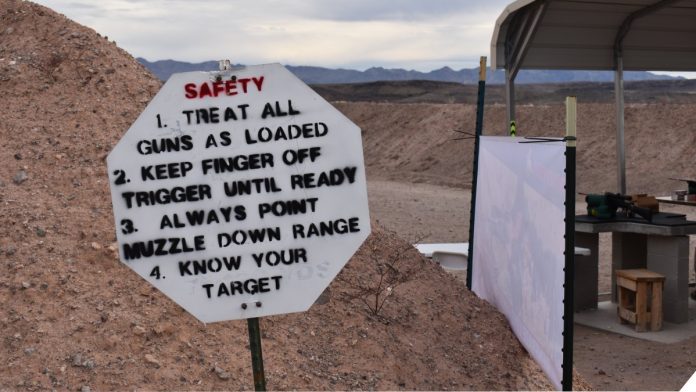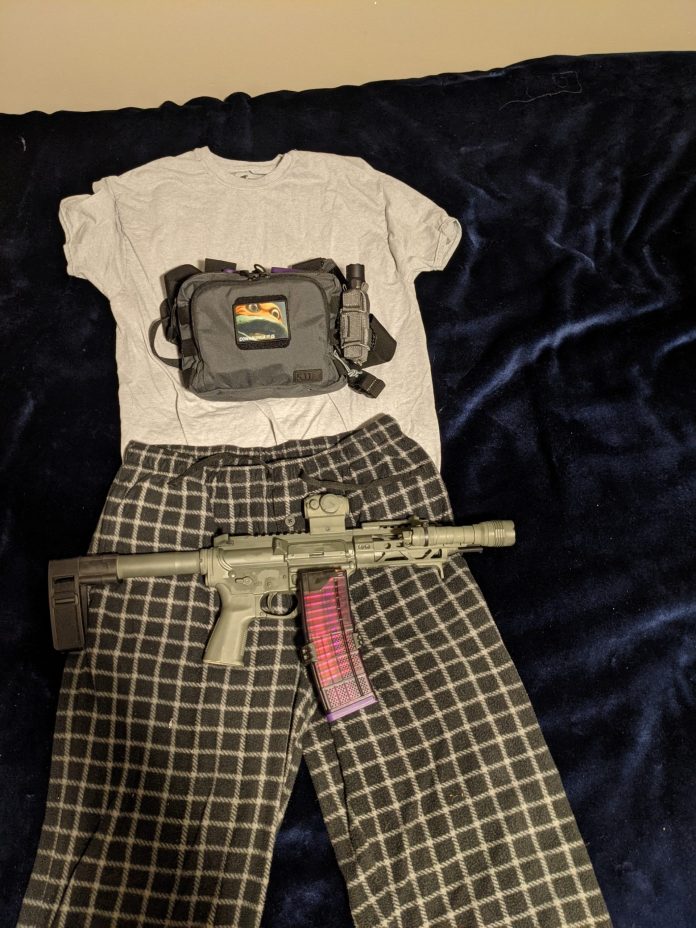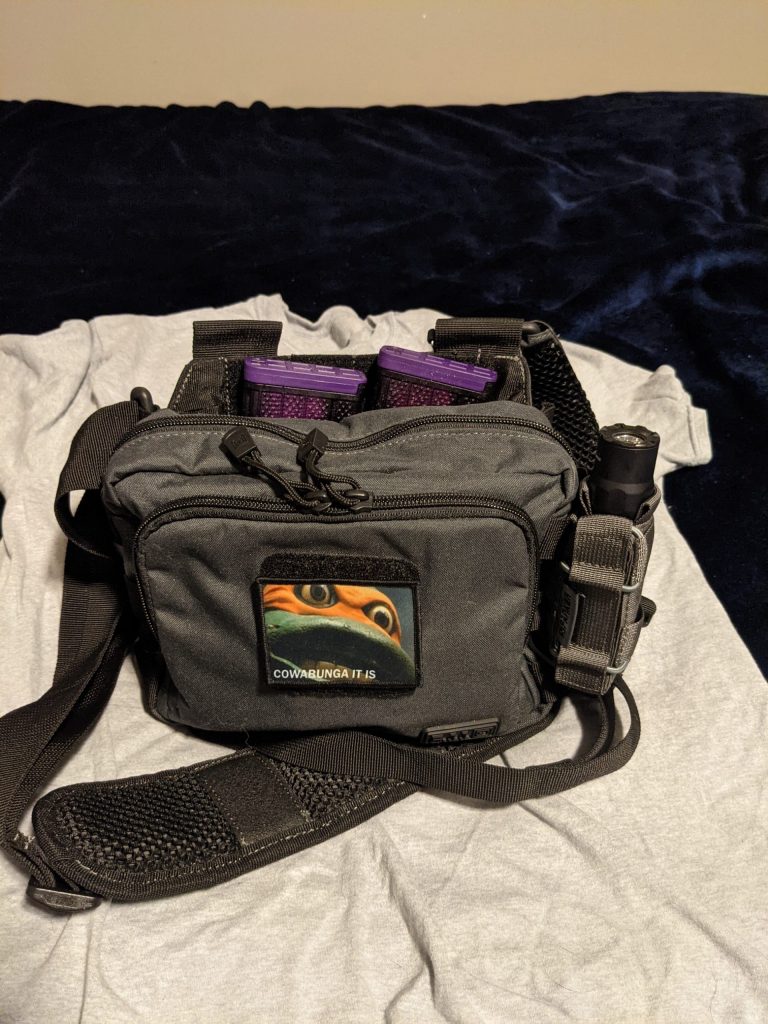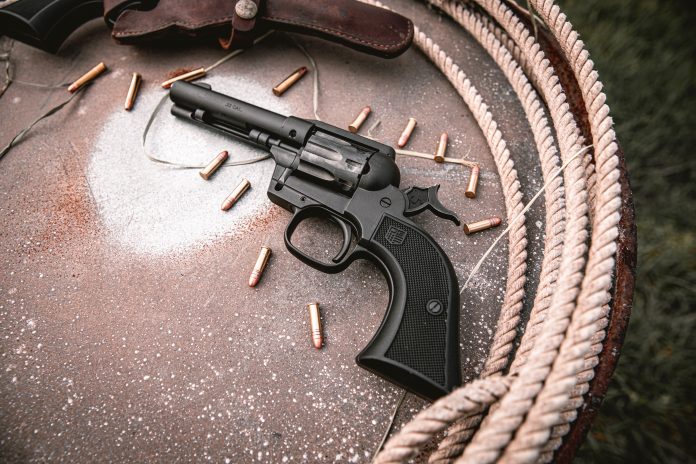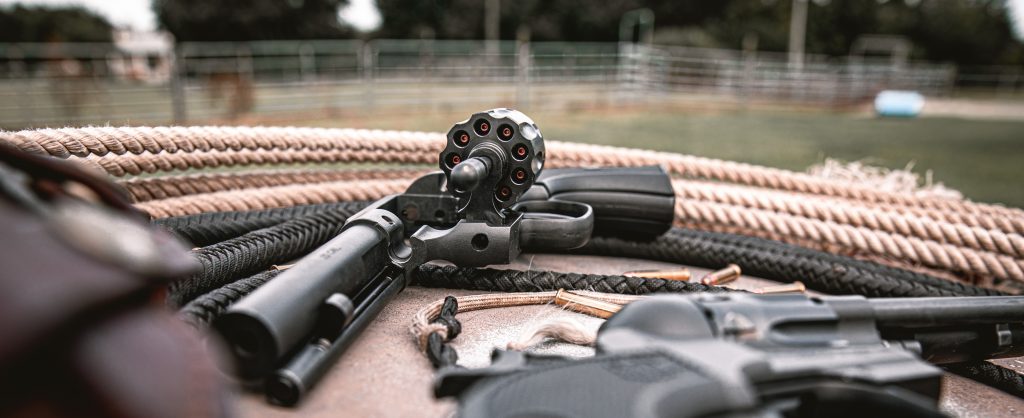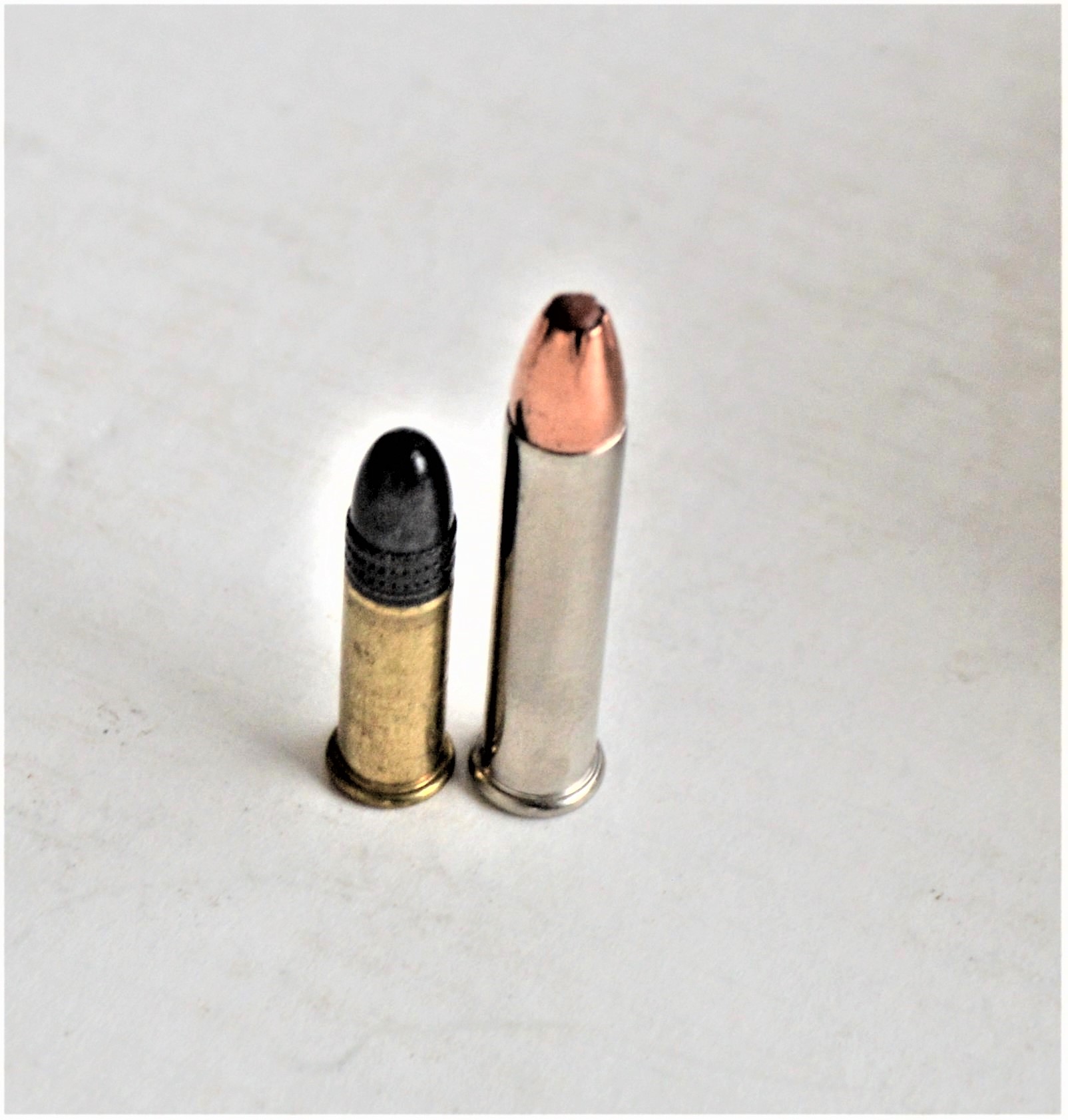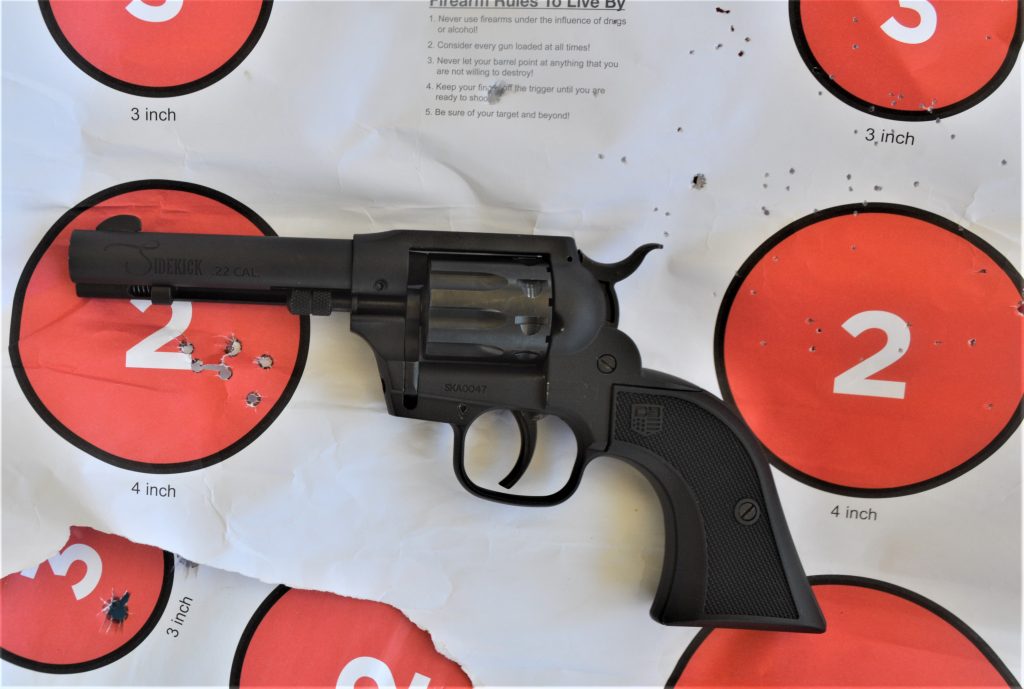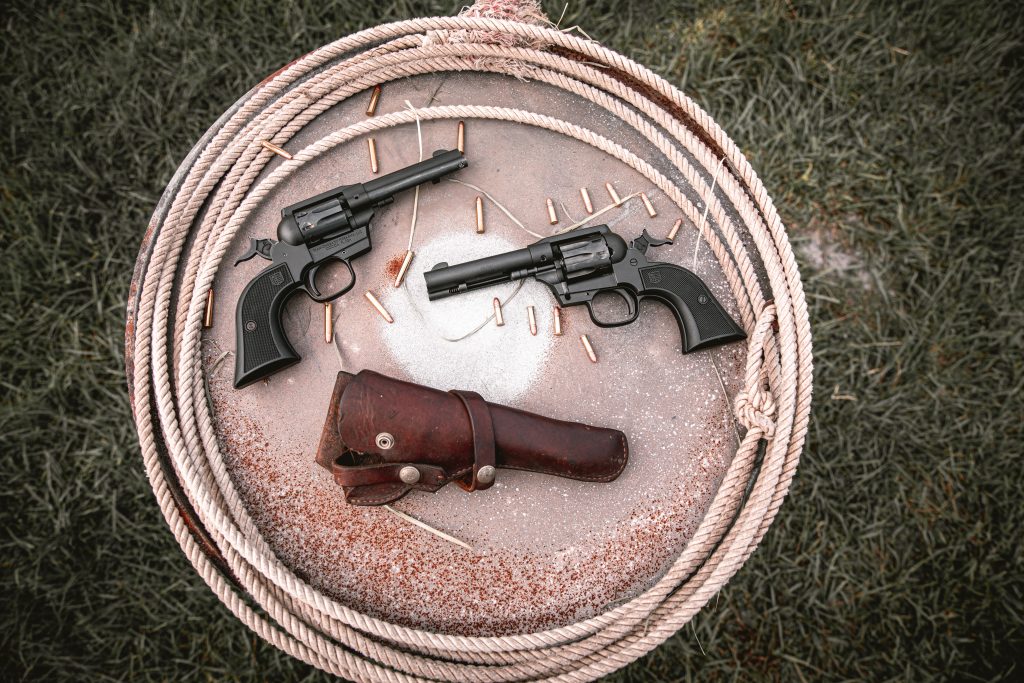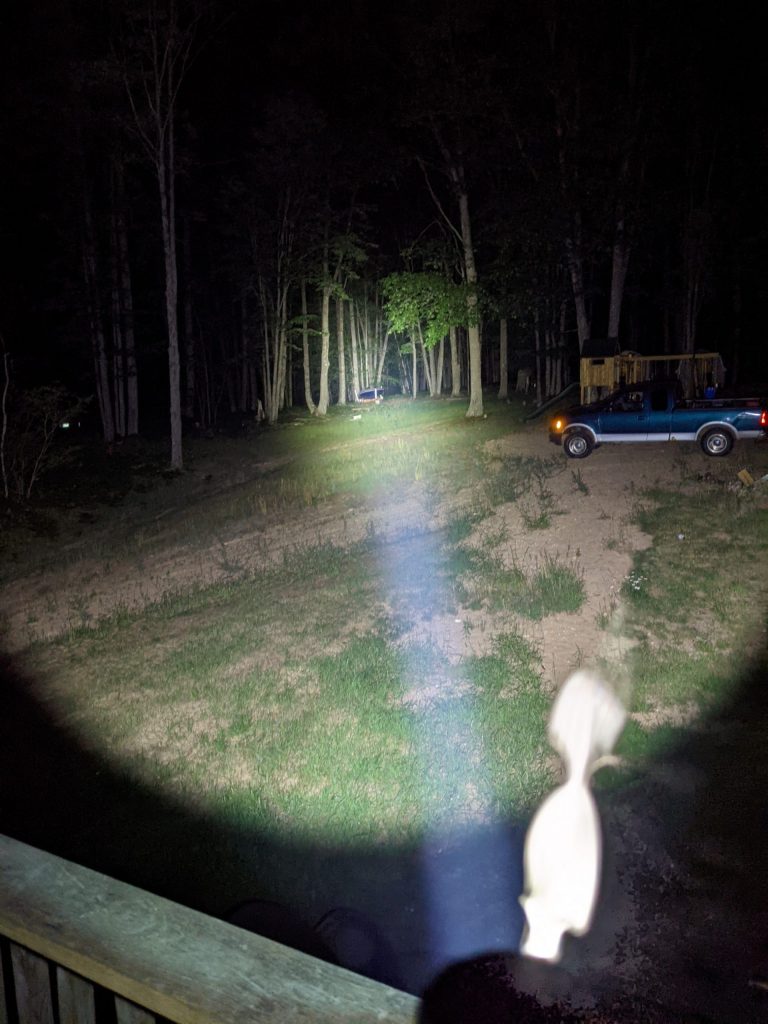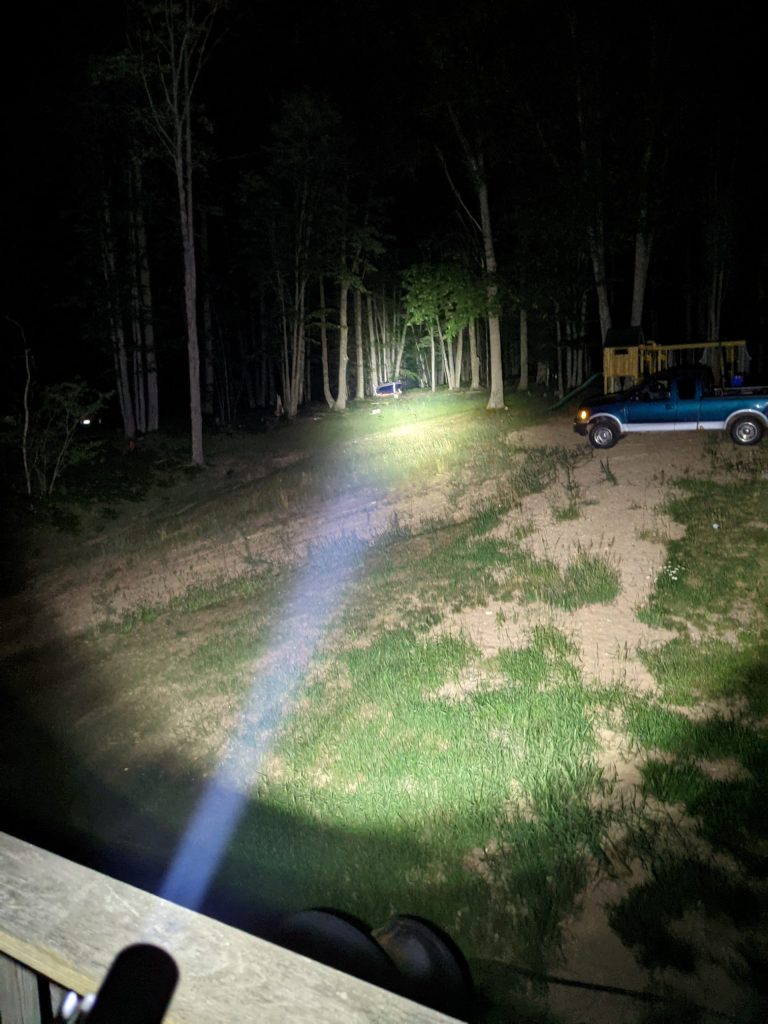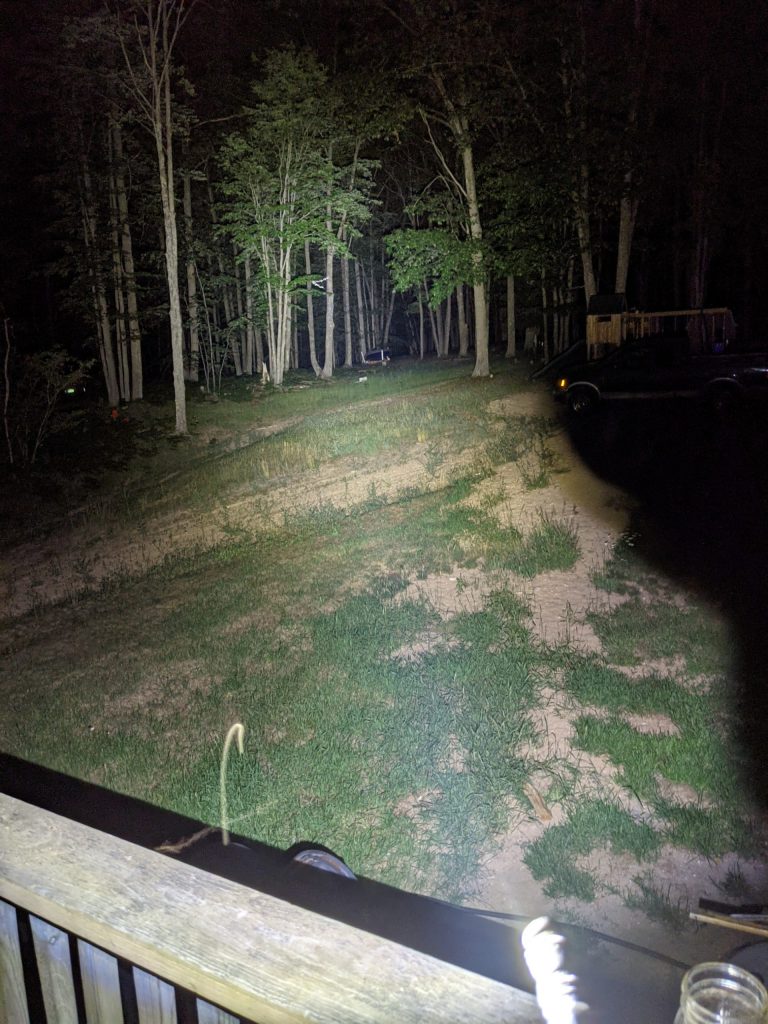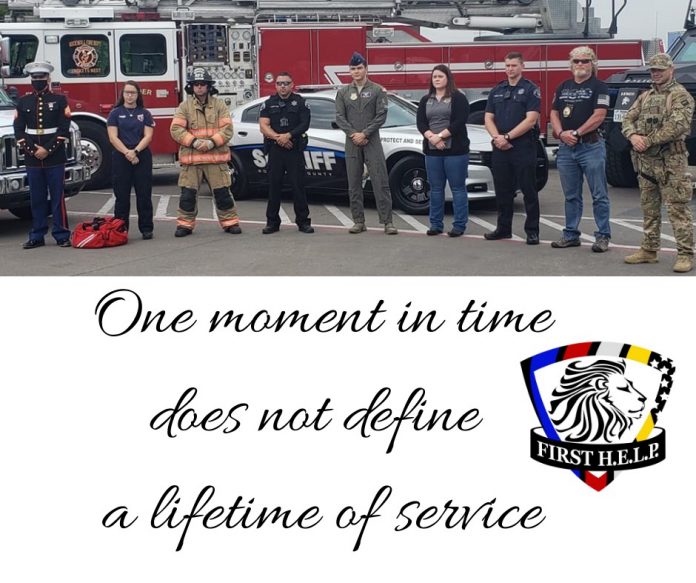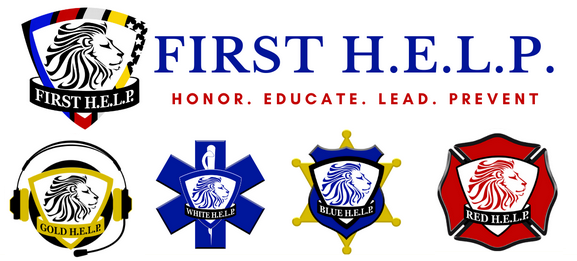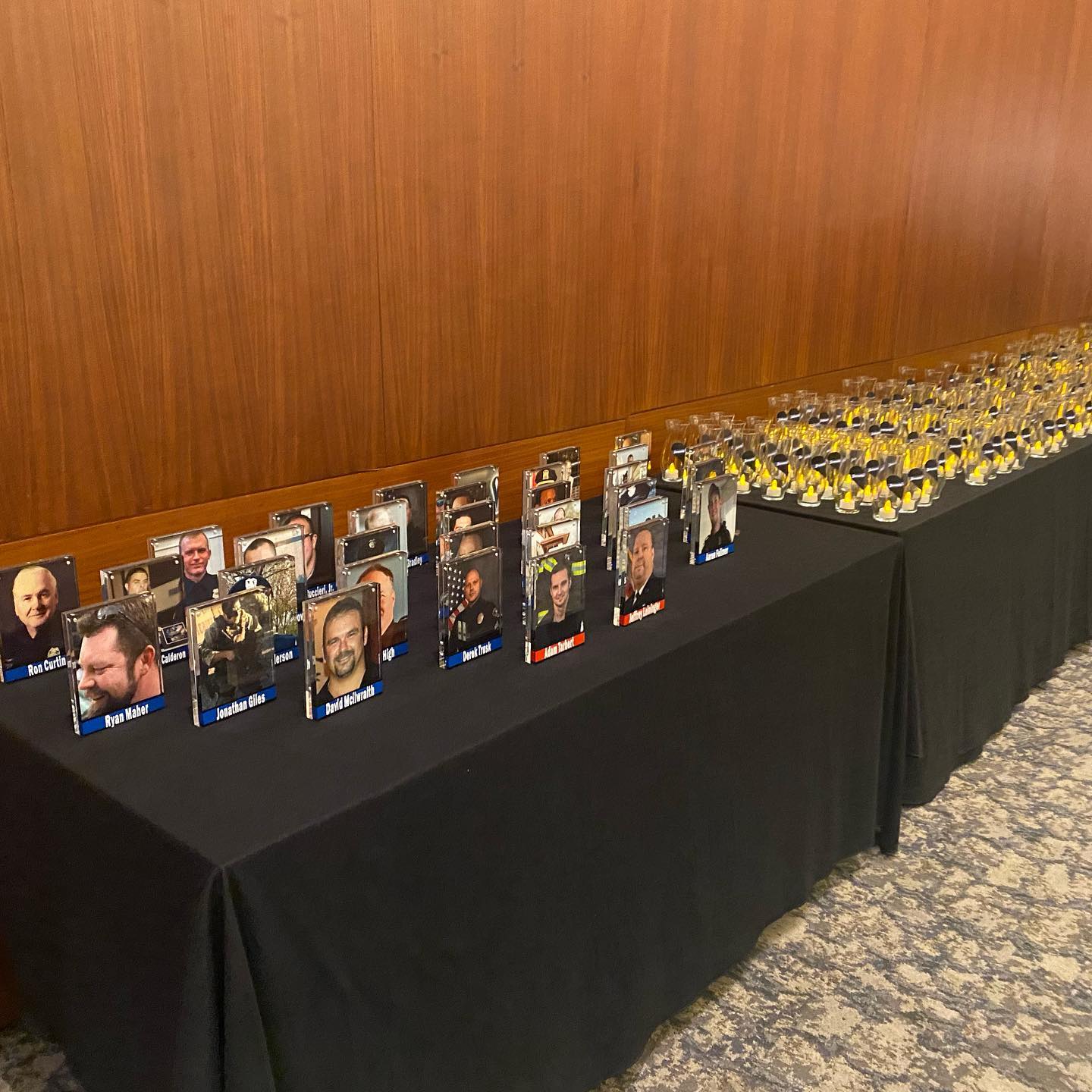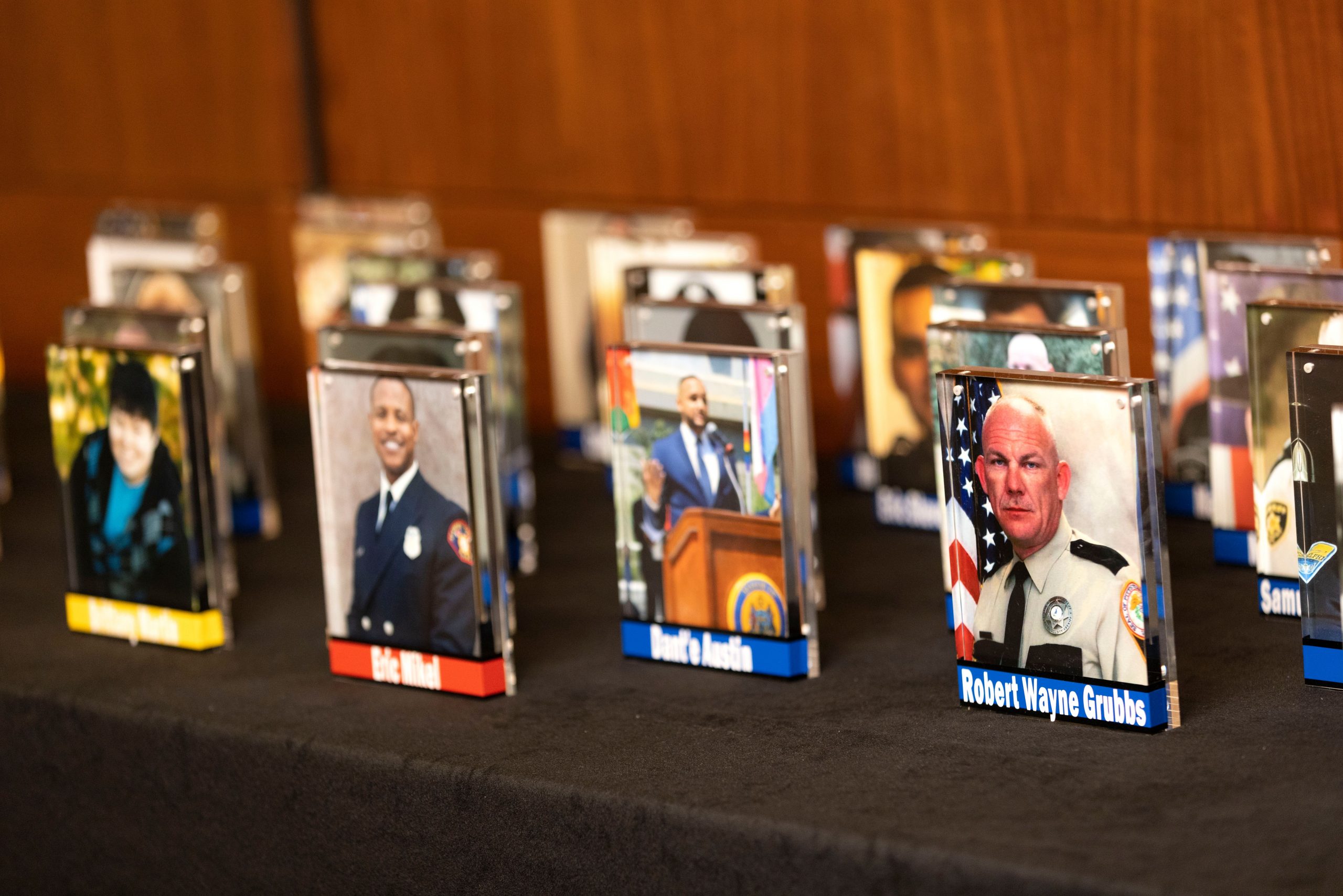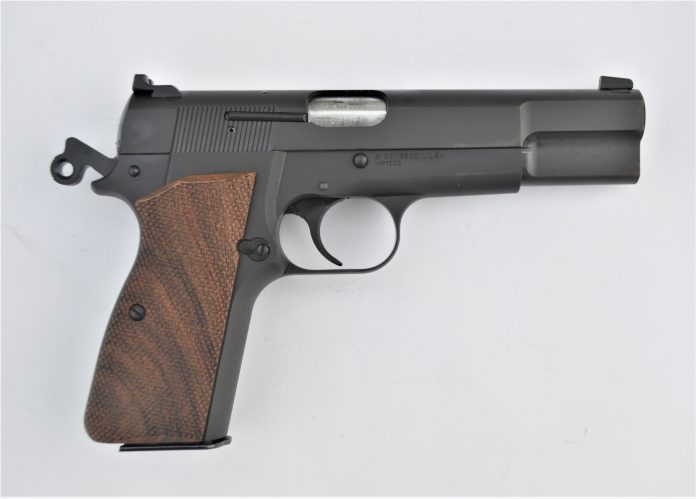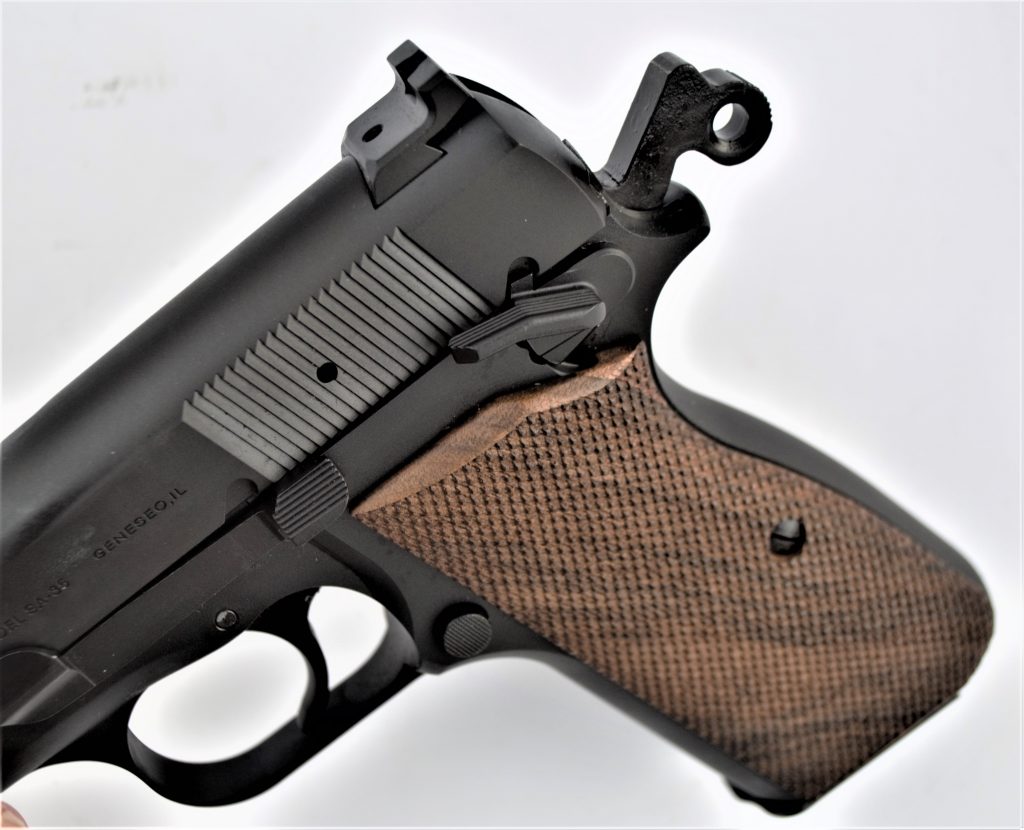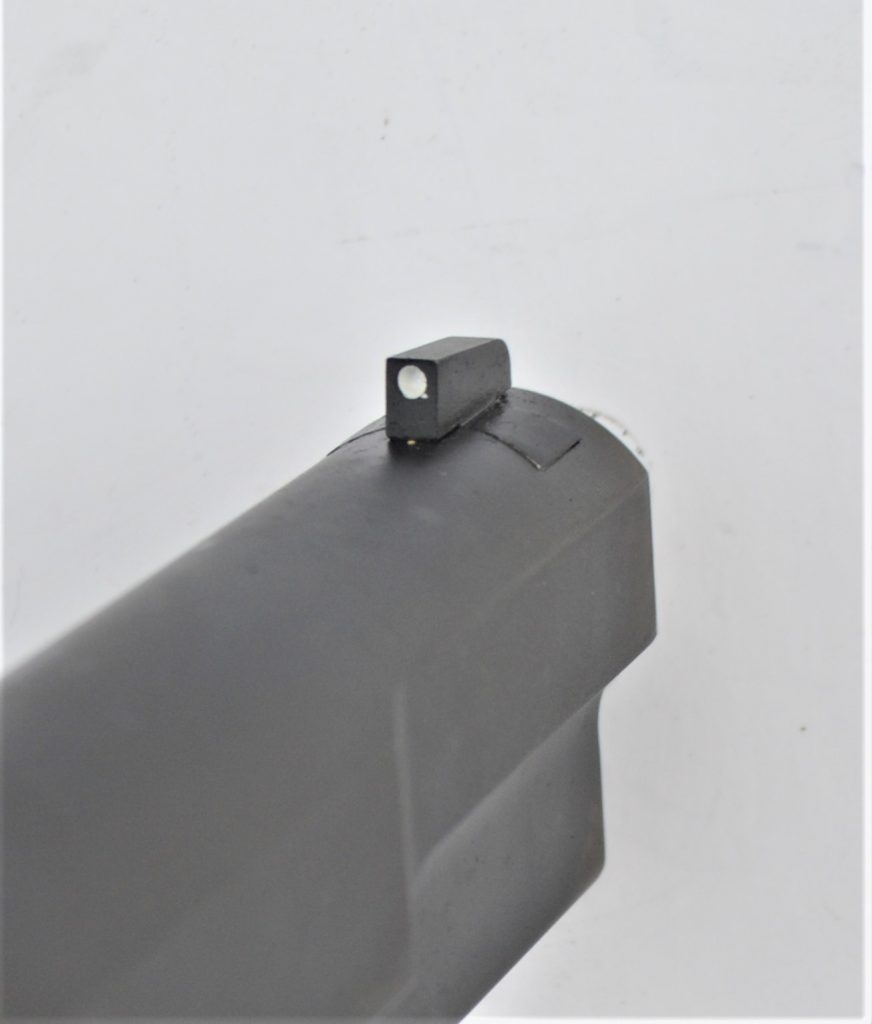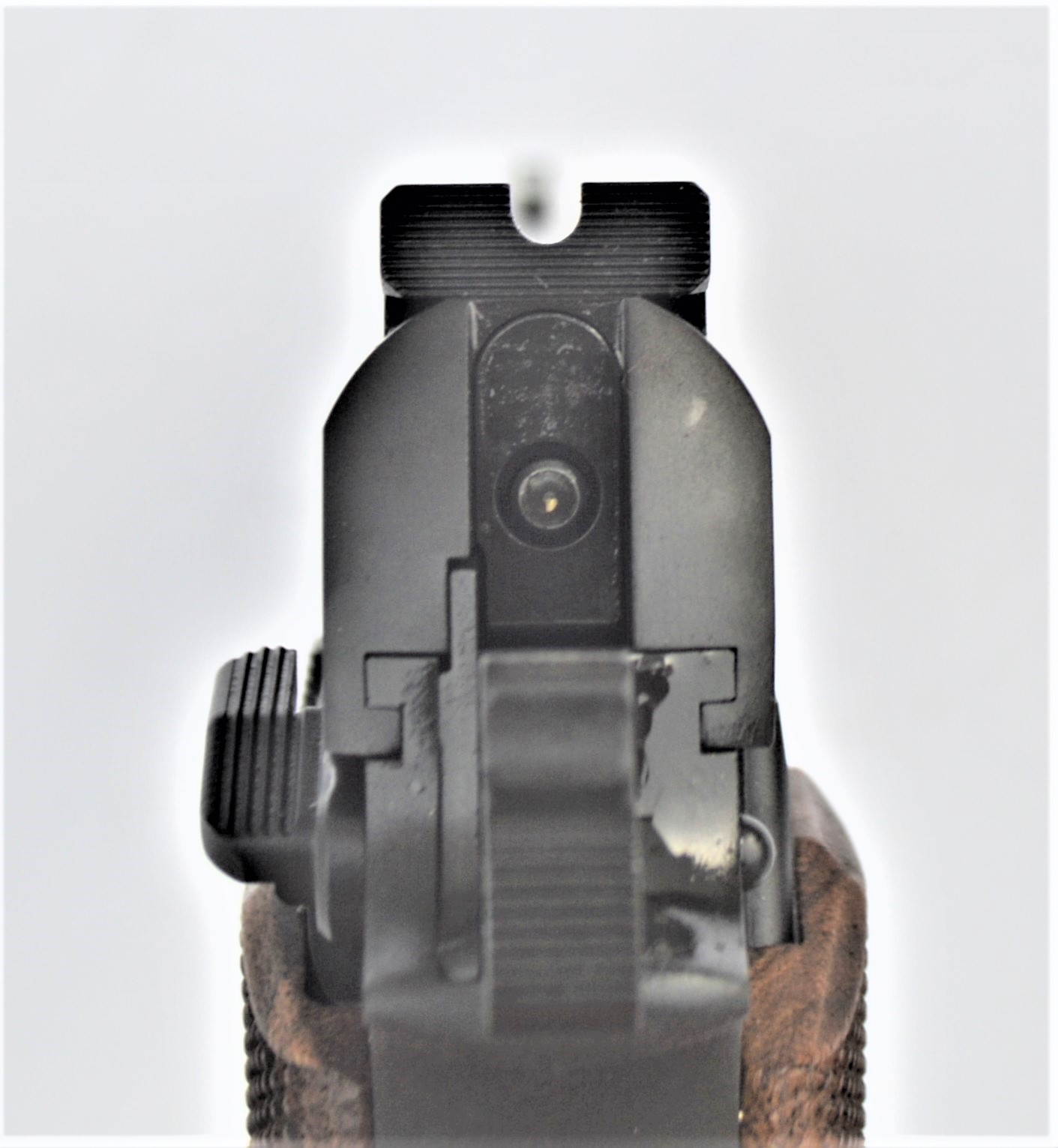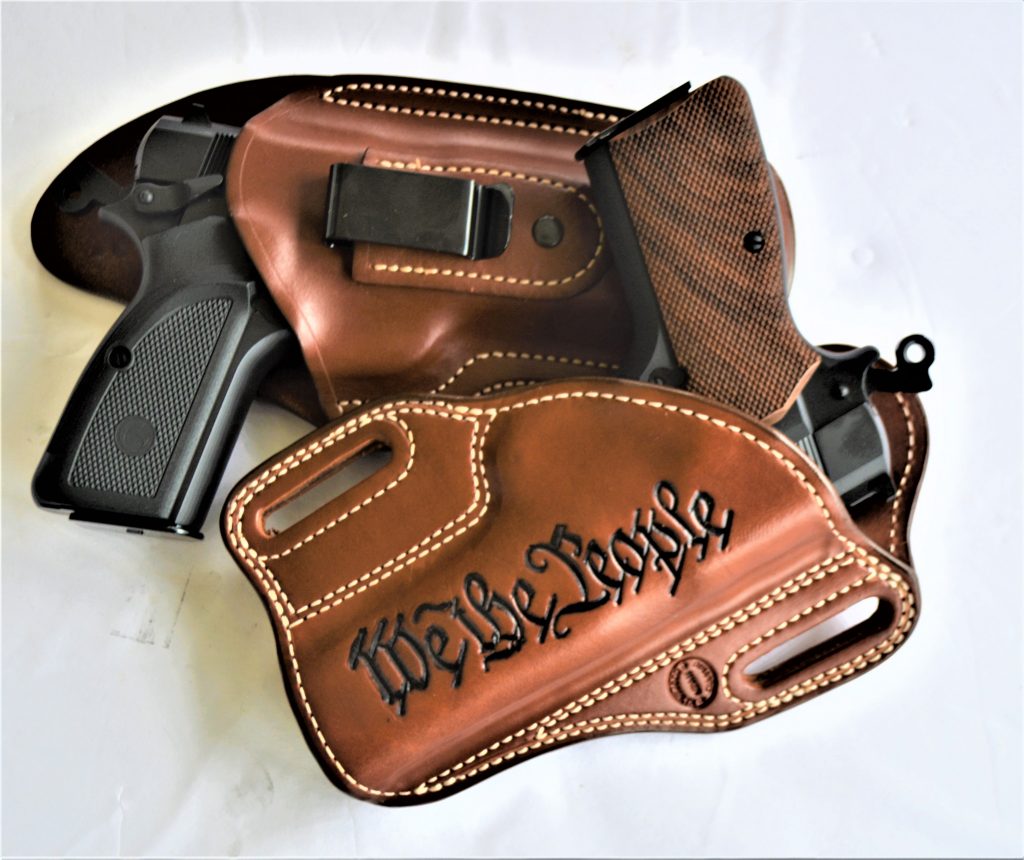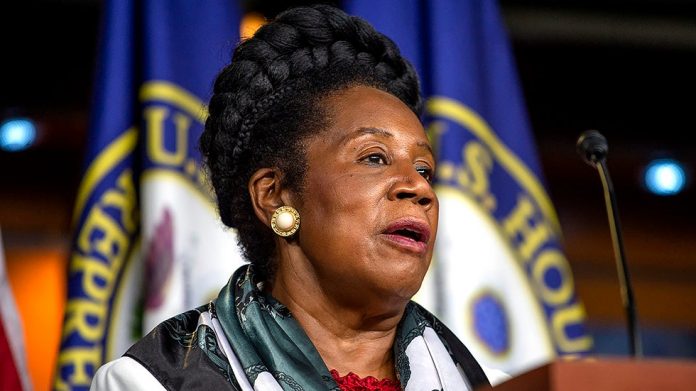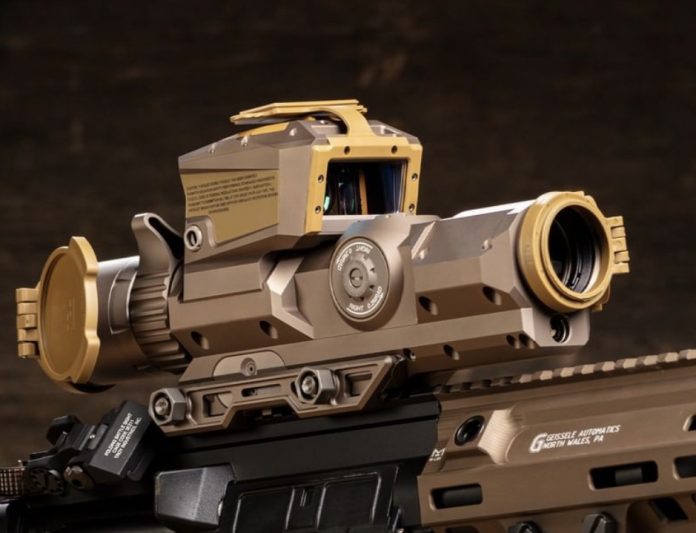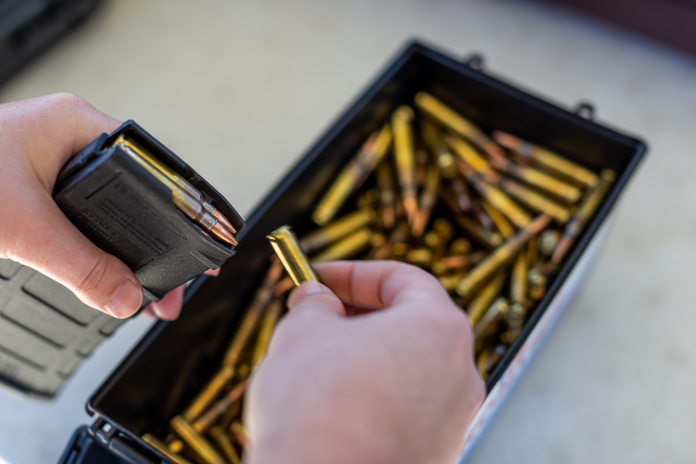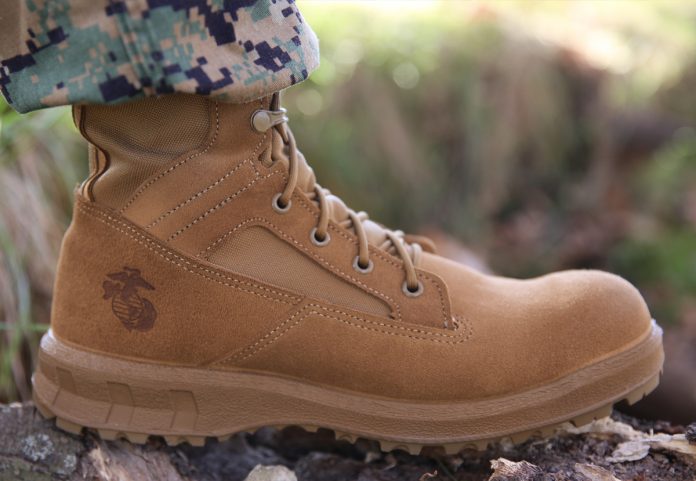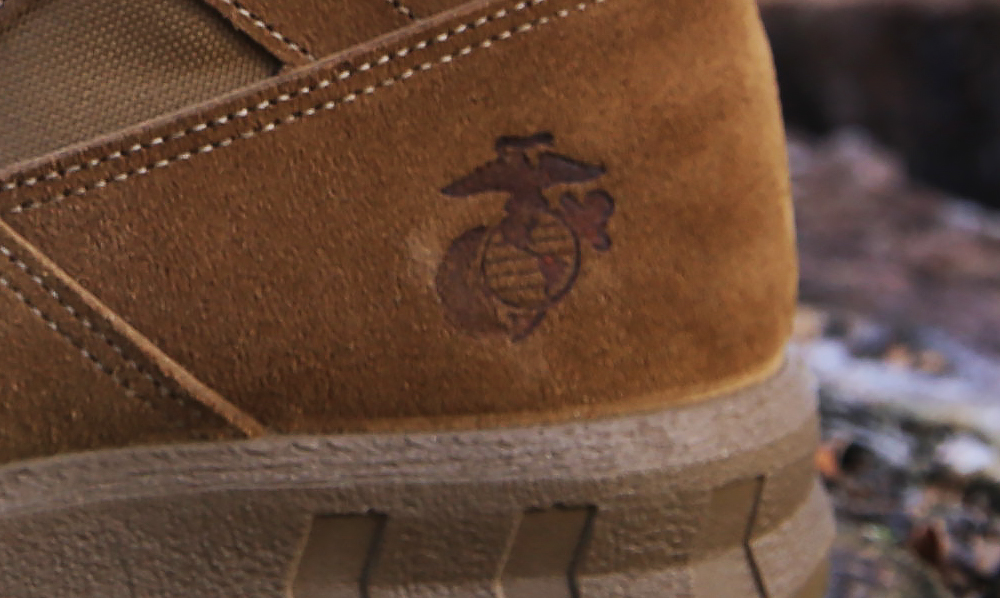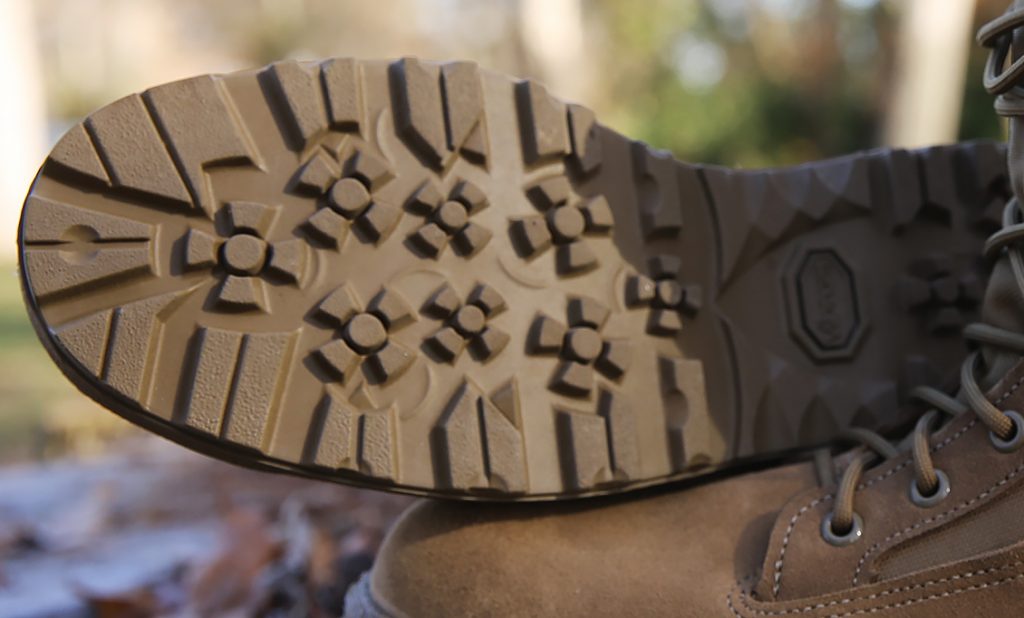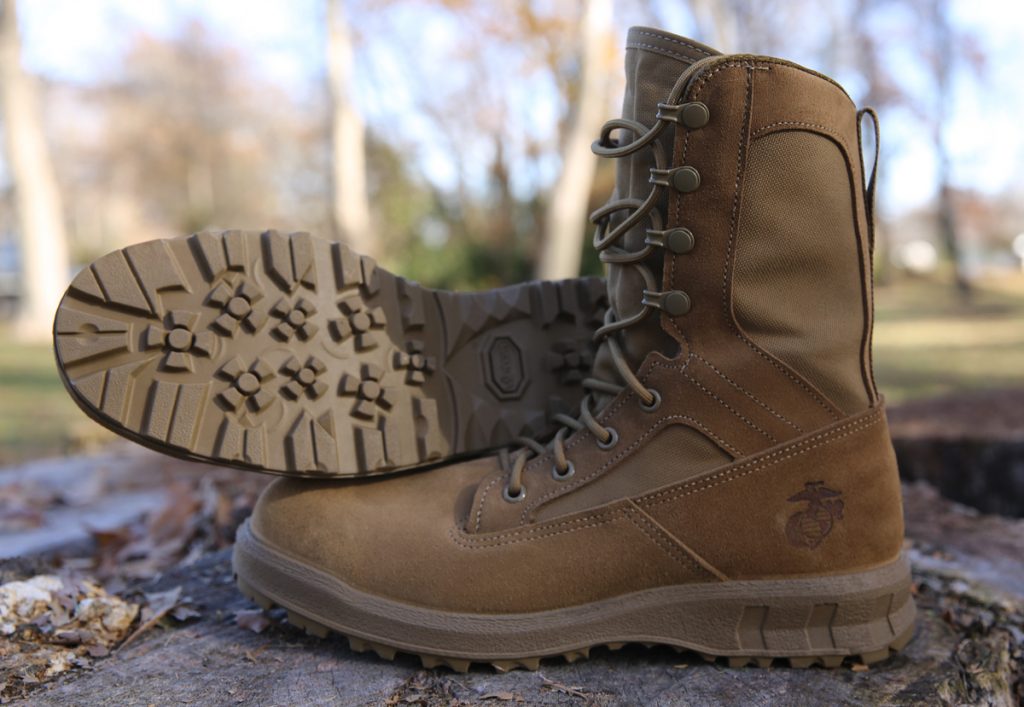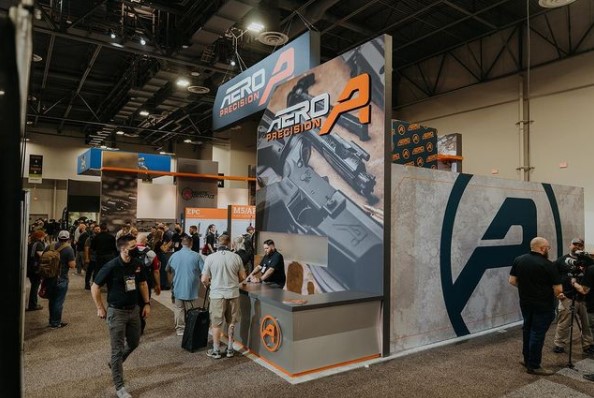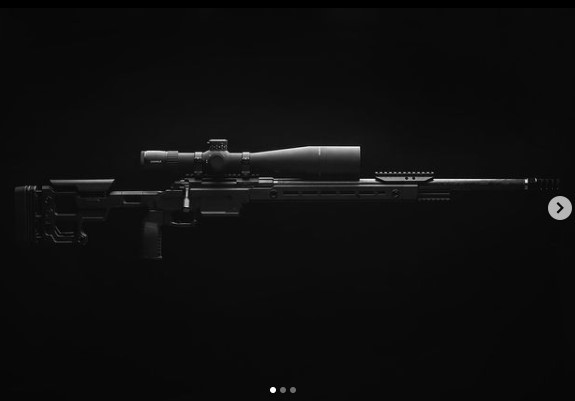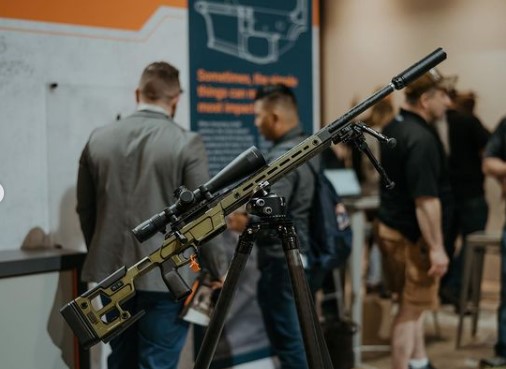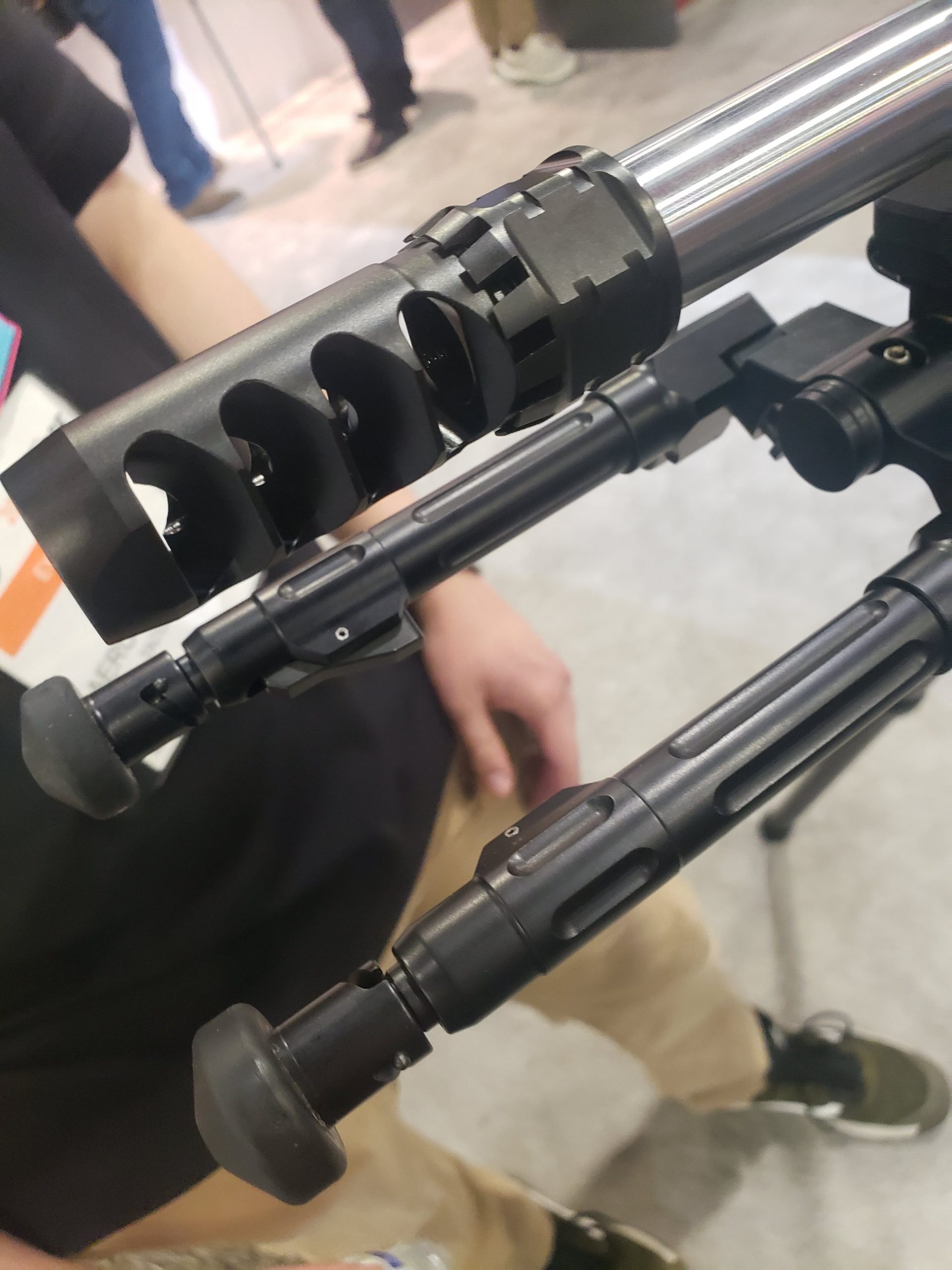When I share an article like this, it is usually because the author of said article is off somewhere like Never Never Land and won’t be back to earth for awhile. Earth, where problems are complex and multidimensional because people are complex and multidimensional.
But Reason recently published one of the best summations about why Gun Control, like the ‘War on Drugs’ has harmed minority communities disproportionately. Yet unlike the ‘War on Drugs’, which drugs appear to be winning, Gun Control is still championed by progressive activists instead of maligned for the harm it causes the communities it ostensibly protects. I wrote on the privilege of gun control, here are its rather harsh realities contrasted with the similar realities of drug policy.
Spoiler Alert and/or Trigger Warning, these policies origins are racist. Like holy shit racist. If you think some dudes acting like fools with tiki torches is bad, do not look into the drug and gun control policies of the Federal and State governments.
Oh and these aren’t all buried in the deep past of the nation either. Our President, the much vaunted Hillary Clinton, and many of their allies were all saying crap like this in the halls of Congress during their careers. Hell, the reefer madness nonsense was still big in the nineties and early aughts.
[Long read. Reason article text in Italics paragraphs.]
Sheila Jackson Lee, a black Democrat who has represented downtown Houston in Congress since 1995, thinks repealing marijuana prohibition is “an important racial justice measure.” Twice in the last three years, she has sponsored or co-sponsored bills that would have removed cannabis from the list of federally proscribed substances, eliminating a ban first imposed in 1937. “Thousands of men and women have suffered needlessly from the federal criminalization of marijuana,” Jackson Lee said in 2020, “particularly in communities of color.”
Like the war on weed, gun control is historically rooted in racism and disproportionately harms African Americans. But on the latter issue, Jackson Lee’s agenda is decidedly different.
In 2021, Jackson Lee introduced a bill that would create an elaborate nationwide system to license gun owners, register firearms, and punish violators with the sort of harsh mandatory minimum penalties that she passionately condemns when they are imposed on drug offenders. Jackson Lee frames her proposed restrictions as sensible public safety measures—just as pot prohibitionists have always done.
Jackson Lee embodies a common contradiction. Progressive politicians nowadays overwhelmingly oppose pot prohibition and criticize the war on drugs, in no small part because of its bigoted origins and racially skewed costs. Yet they overwhelmingly favor tighter restrictions on guns, even though such policies have a strikingly similar history and contemporary impact.
Drug control and gun control are unjust because they criminalize conduct that violates no one’s rights, which erodes civil liberties, contributes to mass incarceration, and unfairly imposes lifelong restrictions on millions of Americans. All of that would still be true even if those policies affected different racial and ethnic groups equally. But for progressives who decry “systemic racism,” the drug war’s disparate impact makes it especially troubling, and you might think they would see gun control in a similar light. [Emphasis added]
I’m not breaking in between paragraphs here as I would usually do because the set up here is perfect unbroken. Two very similar policies with very similar negative consequences that disproportionately harm minority communities and yet one is championed by progressives while the other is condemned.
It is almost as if the results don’t matter so long as the message fits the party line. Odd. [/sarc]
Both types of policies have long targeted racial and ethnic minorities, at first explicitly and later in practice. Worse, the costs of these two strategies build on each other. People convicted of drug felonies permanently lose the right to arms, and illegal drug users likewise are not allowed to own guns. Gun possession exposes drug offenders to heavier penalties, whether or not they use firearms to threaten or harm anyone. Drug possession sends gun-law violators back to prison, and gun possession sends drug-law violators back to prison. The burdens of these interacting prohibitions are strongly correlated with race, which by Jackson Lee’s logic should condemn both.
But it doesn’t condemn both. Because guns bad. Because blue team says guns bad.
The Racist Roots of Drug Control (Here’s where the language gets.. spicy)
Keep in mind these were the policies of the Federal and State governments. If you genuinely believe they’ve changed that much while allowing the negative consequences of the policies to remain in place, I have property under the Mackinac Bridge for sale.
The early advocates of marijuana prohibition were especially alarmed by marijuana use among racial and ethnic minorities. A 1917 report from the U.S. Department of Agriculture described El Paso, Texas, which banned the possession and sale of cannabis in 1914, as “a hot bed of marihuana fiends,” who included “Negroes, prostitutes, pimps and a criminal class of whites” as well as Mexicans. “This menacing evil” and “malicious vice” was said to be especially notable “in the army and among the Negroes.” The report quoted a police captain who warned that marijuana inspired “a lust for blood,” made users “insensible to pain,” and imbued them with “superhuman strength”—claims that would later be recycled in stories about a wide range of psychoactive substances, including crack cocaine, PCP, methamphetamine, and the synthetic cathinones known as “bath salts.”
Those sound like the arguments of reasonable and well informed people. No fear mongering to be found in that. If these arguments sound strikingly parallel to those used by gun control advocates, congratulations you are paying attention.
When Federal Bureau of Narcotics Commissioner Harry Anslinger began beating the drum against marijuana in the 1930s, he echoed and amplified the concerns that had already led about 20 states to ban the plant. In a 1934 report to a League of Nations committee, Anslinger wrote that “fifty percent of the violent crimes committed in districts occupied by Mexicans, Turks, Filipinos, Greeks, Spaniards, Latin-Americans and Negroes may be traced to the abuse of marihuana.”
Anslinger kept a file of stories that reflected his anxieties about drug-facilitated miscegenation. One such item described “colored students at the Univ. of Minn.” who were “partying with female students (white) smoking and getting their sympathy with stories of racial oppression. Result pregnancy.”
Pregnancy, ladies and gentlemen. It results from sex.
The story was similar in the run-up to early bans on opium and cocaine. San Francisco’s 1875 ban on opium dens, the first law of its kind in the United States, was of a piece with various policies targeting Chinese immigrants in California, including restrictions on their rights to hunt, fish, own land, and testify in court. The San Francisco Examiner and other newspapers owned by William Randolph Hearst warned that Chinese immigrants were using opium to seduce white women. At the national level, similar prejudices produced the Chinese Exclusion Act of 1882 and the Opium Exclusion Act of 1909, which banned importation and possession of the drug for smoking. Five years later, the Harrison Narcotics Tax Act effectively prohibited nonmedical use of opiates.
Luckily those policies have resulted in the total elimination of opiate abuse today, right?
…right?
That law also banned recreational use of cocaine, which figured in terrifying tales similar to the ones Anslinger would later promote regarding marijuana. In a 1914 New York Times article headlined “Negro Cocaine ‘Fiends’ Are a New Southern Menace,” the pathologist Edward Huntington Williams averred that “the cocaine-sniffing negro” was a “peculiarly dangerous criminal” because the drug magnified his “courage” and “resistance to shock,” making him impervious to ordinary bullets. [Emphasis added]
Mmm, doubt… Look, a chemically altered threat has probably had their pain tolerance threshold thrown all kinds of wild directions however there isn’t anyone whose organs can just soak up holes in them. Making the human body stop working is something we know a lot about because we spend a lot of our resources on keeping it working.
But is the fear mongering ringing those parallel bells? Do these arguments sound shockingly similar in format to attacks on things like High Powered Assault Weapons? They’ve left the overt racism behind in the language, but that is about it.
“The most passionate support for legal prohibition of narcotics has been associated with fear of a given drug’s effect on a specific minority,” David F. Musto notes in his classic 1973 drug policy history, The American Disease. “Certain drugs were dreaded because they seemed to undermine essential social restrictions which kept these groups under control.”
The Racially Skewed Impact of Drug Control
Now we get into what these policies did, whether any original racially segregating language remains in the laws or not.
Over time, the open expression of racism by supporters of drug prohibition became socially and politically unacceptable. But in some cases, the underlying aims were similar.
John Ehrlichman, President Richard Nixon’s main domestic policy adviser, admitted in a 1994 interview with journalist Dan Baum that his former boss’s war on drugs was a way of attacking the administration’s political enemies. “We knew we couldn’t make it illegal to be either against the war or black,” Ehrlichman said. “But by getting the public to associate the hippies with marijuana and blacks with heroin, and then criminalizing both heavily, we could disrupt those communities. We could arrest their leaders, raid their homes, break up their meetings, and vilify them night after night on the evening news. Did we know we were lying about the drugs? Of course we did.”
The African-American politicians who backed the harsh political response to the “crack epidemic” in the 1980s presumably did not share Nixon’s views on racial matters, although that era’s anxieties about violent crackheads echoed earlier fears of reefer-crazed or cocainized “Negroes.” The scientifically baseless decision to treat smokable cocaine as if it were 100 times worse than the snorted kind—a policy President Joe Biden supported as a senator—led to stark racial disparities in the penalties imposed on federal drug offenders, since the vast majority of people charged with possessing or selling crack were black.
Modern supporters of the war on weed likewise may be completely free of racial prejudice. Marijuana prohibition nevertheless continues to have a disproportionate impact on African Americans. Nationwide, according to a 2020 report from the American Civil Liberties Union, black people are 3.6 times as likely to be arrested for marijuana possession as white people, even though rates of cannabis consumption in the two groups are similar.
Such disparities extend beyond crack and marijuana. “Black and white Americans sell and use drugs at similar rates,” the Brookings Institution reported in 2016, “but black Americans are 2.7 times as likely to be arrested for drug-related offenses.” And “at the state level, blacks are 6.5 times as likely as whites to be incarcerated for drug-related crimes.”
Progressive critics of the war on drugs are acutely aware of its bigoted history and ongoing racial disparities, which they emphasize at every opportunity. “The War on Drugs has been a war on people—particularly people of color,” says the opening line of a legislative summary that Senate Majority Leader Chuck Schumer (D–N.Y.) and two of his colleagues, Sens. Cory Booker (D–N.J.) and Ron Wyden (D–Ore.), distributed when they unveiled a marijuana legalization bill in July. “The Cannabis Administration and Opportunity Act aims to end the decades of harm inflicted on communities of color by removing cannabis from the federal list of controlled substances and empowering states to implement their own cannabis laws.”
Policy was used to directly attack political enemies and groups and it was disguised as ‘Public Safety’ the whole while. We have decades to over a century of hostile policy still impacting our communities. But progressives and conservatives are increasingly pivoting on drugs.
Progressives show no such signs on the possession of arms.
The Black Tradition of Arms
These same legislators, like nearly all Democratic politicians, seem blind to similar problems with gun control, which they tend to reflexively support. In this respect, Booker—who favors federal gun licensing, a ban on “assault weapons,” and a 10-round limit on magazines—is typical of African-American leaders, who are overwhelmingly Democrats and overwhelmingly support new restrictions on firearms. But as Fordham University law professor Nicholas Johnson shows in his 2014 book “Negroes and the Gun”, it was not always thus.
Johnson details the long “black tradition of arms” in America, beginning with the struggle against slavery and continuing through the murderous racist violence that followed the Civil War, the vicious oppression of the Jim Crow era, and the civil rights movement of the 1940s, ’50s, and ’60s. Black leaders such as Frederick Douglass, Ida B. Wells, W.E.B. Du Bois, T.R.M. Howard, Roy Wilkins, and Martin Luther King Jr. unambiguously endorsed the right to armed self-defense as a crucial safeguard against the racist aggression that government officials commonly ignored when they were not actively participating in it.
As a remedy against kidnappers who sought to return people like him to slavery, Douglass recommended “a good revolver, a steady hand and a determination to shoot down any man attempting to kidnap.” Wells declared that “a Winchester rifle should have a place of honor in every black home” and “should be used for that protection which the law refuses to give.” Even King, the very embodiment of peaceful resistance, relied on firearms for “that protection.”
In 1956, after his home in Birmingham, Alabama, was bombed, King applied for a permit to carry a gun. Despite the potentially deadly threats that King faced as a leader of the Montgomery bus boycott, the county sheriff said no. “I went to the sheriff to get a permit for those people who are guarding me,” King told fellow protest organizers. “In substance, he was saying, ‘You are at the disposal of the hoodlums.'” Several years later, King noted that “all societies” accept “violence exercised merely in self-defense” as “moral and legal,” adding that “when the Negro uses force in self-defense, he does not forfeit support” and “may even win it, by the courage and self-respect it reflects.”
The greatest mistake young voting progressives continue to make is assuming that the people in power are on their side and always will be. They are encouraged by those same people in power to not look at any negative consequences of policy and simply push the agenda of utopia. COVID awoke many people to the fact that the government will not and cannot be your lifeline, they are simply your policy makers and handlers. Choose them wisely and accordingly.
Johnson notes that the National Association for the Advancement of Colored People (NAACP) “cut its organizational teeth” defending black people who resisted racist violence with firearms. Most prominently, the organization hired the famous trial lawyer Clarence Darrow to defend Detroit physician Ossian Sweet, who was charged with murder in 1925 after he and his friends used guns against a violent mob bent on evicting him and his family from a white neighborhood.
Sweet’s victory was the centerpiece of a fundraising campaign that helped establish what is now the NAACP Legal Defense and Educational Fund (LDF). The LDF, which grew out of the NAACP’s legal department but has operated independently since 1957, won landmark victories against segregation, voting restrictions, and other forms of racial discrimination.
They’ve certainly changed their tune on that one, to the detriment of minority self-defense. Now firearms seems to be the one thing the NAACP doesn’t want to touch, because the Democrats say they are bad.
The Racist Roots of Gun Control
Just as African Americans widely recognized the potentially lifesaving value of firearms, white supremacists understood the threat that armed black people posed to the existing social order. “The historical record provides compelling evidence that racism underlies gun control laws—and not in any subtle way,” historian Clayton Cramer noted in a 1995 “Kansas Journal of Law and Public Policy” article. “Throughout much of American history, gun control was openly stated as a method for keeping blacks and Hispanics ‘in their place,’ and to quiet the racial fears of whites.”
Beginning in the 17th century, when Virginia prohibited black people, whether free or enslaved, from carrying weapons, the colonies and the states they became imposed a series of race-based restrictions on the possession of arms. After the 1831 slave uprising led by Nat Turner, Virginia made it illegal for free blacks to “keep or carry any firelock of any kind, any military weapon, or any powder or lead.” Tennessee revised its constitutional guarantee of the right to arms, restricting it to “free white men.”
Racism and tribalism are human social traits that have held for millennia. They trace their roots all the way back to pre-societal mankind where you tribe, your family unit meant safety and other tribes and other family units meant danger. This isn’t an excuse for modern racism, we literally know better nowadays, but it is an acknowledgement that this thinking is rooted deeply in the human experience. All of the human experience. Every society, upon every continent we’ve settled, and in every age to include the present has built social structures upon racial and tribal lines and the priority for those in power has always been their own people first.
Tens of thousands of years has only been being combatted socially for a few decades and tremendous progress continues to be made. Gun control legally squashing minority groups continues to be a problem, but gun control is in vogue with the progressive crowd so its racism is seen as totally cool.
Terrified at the prospect of further insurrections, legislators in Southern states prohibited the transfer of firearms to slaves, limited their use of these otherwise common tools to hunting expressly authorized by their masters, required free blacks to obtain gun licenses, and authorized the seizure of guns found in their homes. “Overall,” legal scholars Robert Cottrol and Raymond Diamond observed in a 1991 Georgetown Law Journal article, early gun control laws “reflected the desire to maintain white supremacy and control.”
This remains true even if you remove the racially targeted language, the policies are crafted to control ‘undesirables’ and not to discourage or prevent crimes like murder, robbery, or rape.
If “negroes” were recognized as citizens, Supreme Court Chief Justice Roger Taney warned in the infamous 1857 case Dred Scott v. Sandford, they would be entitled to all “the privileges and immunities of citizens,” including the right to “keep and carry arms wherever they went.” After the Civil War, the Civil Rights Act of 1866 and the 14th Amendment aimed to make Taney’s nightmare come true. The Civil Rights Act was a direct response to the postbellum Black Codes, which among other things restricted or prohibited gun possession by African Americans. It is likewise apparent from the debate leading up to the 1868 ratification of the 14th Amendment that the right to armed self-defense was one of the “privileges or immunities” it guaranteed to “all persons born or naturalized in the United States.”
There we have further proof from long before 2008’s Heller decision that the right to arms was considered a right of the American citizen, and anyone we made an American citizen should be protected in their access to that right. Gun control has never been about gun violence, laws against those particular crimes of assaults and homicides are, gun control has always been about control of ‘undesirable’ population. Taking arms from the Natives, preventing Blacks from arming as is their right as people and citizens, demonizing the Asian immigrants as subhuman, proclaiming Hispanics as criminalistic drug fiends.
Any time we’ve used the prohibition of arms as a tool, it has been to control the exaggerated or entirely invented behavior of an ‘undesirable’. Recognizing other’s autonomy continues to be one of humanity’s greatest problems. We keep getting it partially correct and letting bias and hubris fail to take us the remainder of the way.
In practice, however, that right was frequently denied. Eight years after the 14th Amendment was ratified, in United States v. Cruikshank, the Supreme Court held that the federal government had no authority to stop members of terrorist groups like the Ku Klux Klan from disarming black people. It said the remedy for such private aggression lay with state governments.
But oh how we changed our tune on terror when it was Syrians.
Those same governments, meanwhile, were passing gun controls that were race-neutral on their face but racist in practice. The measures included bans on inexpensive handguns, which prefigured restrictions that Congress imposed nearly a century later, and discretionary carry permit laws, which resembled contemporary laws, still enforced by several states, that give local officials wide authority to decide who is allowed to bear arms. The latter policy gave police license to deny civil rights leaders like King the right to armed self-defense and to arrest those who dared to arm themselves in defiance of the law.
Economic class can be just as effective at discrimination as race, and giving local authority carte blanche on deciding which citizens get to go armed and which do not goes sideways as soon as someone sufficiently biased is placed into a position of authority.
But we’ve never had biased people hold public offices, right?
For a law to work justly it must be as exploit free as is possible. This includes removing the ability of authority figures to play the rules for one group or against another, as much as is possible.
The Gun Control Act of 1968, which was largely a response to political assassinations, likewise was not officially aimed at disarming black people. But “among the act’s most significant restrictions,” Johnson notes, “were import limits on small, cheap handguns derided as ‘Saturday Night Specials’—a label that combined references to cheap little guns dubbed ‘Suicide Specials’ and the tumult of ‘Niggertown Saturday Night.'”
In his 1973 book The Saturday Night Special, investigative reporter Robert Sherrill concluded that members of Congress were trying to “shut off weapons access to blacks.” Since legislators “probably associated cheap guns with ghetto blacks and thought cheapness was peculiarly the characteristic of imported military surplus and the mail-order traffic,” he wrote, “they decided to cut off these sources while leaving over-the-counter purchases open to the affluent.”
Biased use of an ostensibly unbiased law. Economic based assault against Blacks and the “criminal class of whites” mentioned earlier in the article. But of course the affluent, including affluent minorities who’ve ‘risen above’ their minority status because money, are only inconvenienced by such laws.
Similarly, California’s Mulford Act, a 1967 law that banned the open carrying of loaded guns, was a response to armed Black Panther patrols in Oakland that aimed to police the police. The law was supported by then-Gov. Ronald Reagan and the National Rifle Association, later known as staunch defenders of the Second Amendment.
Playing to this particular political wind was not one of Reagan’s greatest hits and helped set California up for the abysmal state of it’s citizen’s civil rights today.
The Racially Skewed Impact of Gun Control
The Gun Control Act of 1968 also described broad categories of Americans who were not allowed to possess firearms, including “unlawful user[s]” of controlled substances and people convicted of crimes punishable by imprisonment for more than a year, meaning nearly all felonies. The Brady Handgun Violence Prevention Act of 1993 made those disqualifications enforceable through background checks that federally licensed firearm dealers are required to conduct before completing sales.
The 4473 and NICS checks. Because we don’t want ‘the wrong people’ having legal access to firearms even though it is the illegal act with the firearm that is the crime we are really scared of. Is there a more scare mongering list than the ‘prohibited persons’ list? Maybe the ‘no fly’ list is. But people cling to that list with one hand as a flawless arbiter of ‘the wrong people’ while simultaneously acknowledging that or Vice President, Kamala Harris, has likely overcharged and over prosecuted up to thousands of Californians hypocritically.
We like the sound the rule makes, so we ignore the rule in practice. We ignore the what the law does because in our minds the law sounds good and is there for an alleged good reason. It’s the same garbage half logic they pull with ‘opinion’ polls asking things like, ‘Should Congress pass gun laws that make us safer?’. Of course they should, but nobody checks on their work to see if we as the people are actually satisifed with the hard data of their results.
Judging from federal survey data, the disqualification for illegal drug users theoretically applies to something like 60 million Americans. That includes people who use controlled substances prescribed for others or use them contrary to their doctor’s instructions, along with all cannabis consumers, even if they live in states that have legalized marijuana. The survey data indicate that the rates of illegal drug use among black Americans and white Americans are nearly identical. But because African Americans are especially likely to be arrested for drug possession, they are especially likely to be caught violating this provision of the Gun Control Act if they own firearms.
This is the Law of Unintended Consequences’ evil sibling, the Law of Unstated, but Projected, Consequences. The rule says what is says, but it does in practice what at least some of the drafters actually wanted it to say and do.
The ban on gun possession by people with felony records applies no matter the nature of the crime or when it was committed. It disproportionately affects black men because they are disproportionately likely to have felony records. A 2017 study by University of Georgia sociologist Sarah Shannon found that 33 percent of male African Americans had been convicted of a felony, compared to 8 percent of the general population. In other words, millions of black men have permanently lost their Second Amendment rights, even if their crimes were nonviolent, occurred long ago, or both.
When someone who has a felony record is caught with a gun, that is another felony, punishable by up to 10 years in prison under federal law. In certain situations, mandatory minimum sentences apply to firearm offenses. When they do, the defendants are mostly black.
But since modern sensibilities have shifted, when these rules are trumpeted as necessary for safety, propagandists will use a white mass killer as the poster boy reason why this rule needs to be. It doesn’t matter that it is mostly used to prosecute minorities, especially Blacks, the reason is the scary white guy.
18 USC 924(c) prescribes a five-year mandatory minimum for anyone who possesses a firearm “in furtherance of” a drug trafficking offense or a crime of violence, whether or not he actually used it. The gun sentence, which must be served in addition to the sentence for the underlying offense, rises to 25 years for each subsequent violation. 18 USC 924(e), also known as the Armed Career Criminal Act, requires a 15-year mandatory minimum for a defendant caught with a gun after three or more convictions for “a violent felony or a serious drug offense.” According to a 2018 report from the U.S. Sentencing Commission, about 53 percent of people sentenced under those two provisions in fiscal year 2016 were black, while 16 percent were white.
Racial disparities also can be seen at the state level. According to FBI data, African Americans, who represent about 14 percent of the U.S. population, accounted for 45 percent of arrests for weapon offenses in 2020.
Interracial differences in violent crime rates may account for some portion of these disparities. But that is clearly not the whole story, since even nonviolent drug offenses can make someone subject to arrest and punishment for violating gun laws. In fiscal year 2016, the U.S. Sentencing Commission found, the most common underlying offense triggering penalties under 18 USC 924(c) was drug trafficking, which accounted for 46 percent of cases; other weapon offenses accounted for an additional 8 percent. Furthermore, simply living in a jurisdiction with strict gun controls—which describes many cities with large black populations—makes an arrest for a weapon offense more likely.
None of this data overrides the fact that impoverished minority neighborhoods have higher crime, but it accounts that some of the reported and prosecuted crimes are of a circumstantial nature not commiserate of the risk associated with the offense.
Example: Marijuana is legal in my state both medically and recreationally, as is carrying your firearm in your home, but a man in Detroit would go away for a felony (or felonies) if he was smoking on his porch carrying his gun. That is the law. Take a guess how the arrest profiles in Blue Team politically controlled Detroit skew.
In 2020, an anti-gun initiative in Washington, D.C., generated controversy because of its racially skewed impact. The program encouraged federal prosecution of people with felony records who illegally possessed firearms. Under the D.C. Code, that offense is punishable by at least a year in prison—three years if the original felony was violent. But sentences under federal law tend to be even more severe: nearly five years, on average, even when mandatory minimums don’t apply.
Records. Not fresh offenses. Records. Meaning crimes already tried and sentences served. Which under our allegedly rehabilitative corrections system should mean they are all shiny and ready to be a full citizen with rights and privileges again. Right? Nope, they’re now an ‘undesirable’ and must be disadvantaged permanently. That is often how a record based arrest and prosecution works. There doesn’t need to be an offense, like possession of child pornography, as the record made a civil right, possession of a firearm, into a crime, possession of a firearm by a prohibited person. I use two variants on possession crimes in that example on purpose. One is a right that became declared a crime, potentially because of entirely unrelated crime, while the other is a heinous crime resultant directly from an even more heinous crime.
D.C.’s felon-in-possession crackdown, which was backed by the District’s African-American mayor, Muriel Bowser, was originally advertised as a citywide measure. But in practice, the program focused entirely on three police districts that overlapped with wards that were 64 percent to 92 percent black. By comparison, black people represented 45 percent of the District’s total population. D.C. Council Member Charles Allen complained that the program “targeted District residents of color,” imposing “harsh penalties on Black residents whose neighborhoods have historically been underinvested in and overpoliced.”
The experience with New York City’s “stop, question, and frisk” program, which was dramatically scaled back in 2014 after years of complaints that it routinely harassed young black and Latino men for no good reason, shows how gun control hurts racial minorities even when it does not send people to prison. Stop-and-frisk encounters almost never discovered guns—although they sometimes turned up pot, leading to arrests for “public display” of marijuana, another example of the malignant interaction between gun control and drug control. Then-Mayor Mike Bloomberg, a billionaire who bankrolls the gun control movement, was untroubled by the dearth of gun seizures. He said the program’s aim was to reduce violence by deterring young men from carrying guns.
Although he did not seem to realize it, Bloomberg’s rationale was inconsistent with the Fourth Amendment, which according to the Supreme Court requires that police reasonably suspect someone is involved in criminal activity before stopping him and reasonably suspect he is armed before frisking him. The fact that pat-downs rarely turned up weapons of any kind suggested that New York cops were frequently flouting that rule. But the assumption that anyone who actually had a firearm would be breaking the law was reasonable given the state’s strict gun control regime, which reserves the privilege of bearing arms to people who can demonstrate “proper cause”—a standard that cannot be satisfied by asserting a general interest in self-defense.
Make a rule almost nobody without a government crony can satisfy and then punish people who break it. Well done, New York.
Prosecuted for Exercising Their Rights
A case the Supreme Court is considering this term, New York State Rifle & Pistol Association v. Bruen, poses the question of whether the Empire State’s carry permit policy is consistent with the constitutional right to bear arms. In a brief arguing that it is not, the Black Attorneys of Legal Aid and several other public defender organizations note that New York’s virtual ban on public possession of firearms imposes a special burden on black and Latino residents.
“Each year,” the brief says, “we represent hundreds of indigent people whom New York criminally charges for exercising their right to keep and bear arms. For our clients, New York’s licensing requirement renders the Second Amendment a legal fiction. Worse, virtually all our clients whom New York prosecutes for exercising their Second Amendment rights are Black [or] Hispanic.” That situation, the public defenders say, “is no accident,” since “New York enacted its firearm licensing requirements to criminalize gun ownership by racial and ethnic minorities,” and “that remains the effect of its enforcement by police and prosecutors today.”
Started as racist policy. Still racist policy, minus the overtly racist words. Still sold to you as ‘for your own safety’ in whatever propagandist coat plays to your biases.
They are referring to the Sullivan Act of 1911, which required a license to own handguns and “gave local police broad discretion to decide who could obtain one.” The brief quotes gun policy scholar David Kopel, who describes the Sullivan Act as a response to “concerns about organized labor, the huge number of immigrants, and race riots in which some blacks defended themselves with firearms.” The brief notes that the law was enacted after “years of hysteria over violence that the media and the establishment attributed to racial and ethnic minorities—particularly Black people and Italian immigrants.”
The public defenders say the restrictions inspired by such concerns continue to have a “brutal” impact on minority groups: “New York police have stopped, questioned, and frisked our clients on the streets. They have invaded our clients’ homes with guns drawn, terrifying them, their families, and their children. They have forcibly removed our clients from their homes and communities and abandoned them in dirty and violent jails and prisons for days, weeks, months, and years. They have deprived our clients of their jobs, children, livelihoods, and ability to live in this country. And they have branded our clients as ‘criminals’ and ‘violent felons’ for life. They have done all of this only because our clients exercised a constitutional right.”
There is the crux of this whole thing, like it or not, there is a Constitutional Right. Protected is your right to arms and we have done too much to cut it up piecemeal for too many bad reasons for no resultant gain in safety. We say we don’t want ‘felons’ to have access to weapons but the ones we really mean get them anyway or use the next most convenient method to cause harm or coercive force. So do we really mean all felons? Do we, when a disproportionate amount of those felons are the same minorities progressives are claiming to be working on behalf of to reform criminal justice in a system more fair and fitting of actions?
Benjamin Prosser, for example, “was prosecuted for carrying a gun for self-defense after he was the victim of multiple violent stranger assaults and street robberies.” Sam Little, “who had survived a face slashing and lost multiple friends to gun violence, was prosecuted after carrying a gun to defend himself and his young son.”
Shelly Parker and Otis McDonald—African-American plaintiffs who challenged local handgun bans in Washington, D.C., and Chicago, respectively—were animated by similar concerns. Since they could not rely on the government to protect them from violent criminals, they thought, it added insult to injury for the government to prevent them from protecting themselves by keeping handguns in their homes for self-defense. Those cases led to landmark Supreme Court decisions finding such laws inconsistent with the Second Amendment right to keep and bear arms. The question now is whether the Court will extend that logic beyond the home.
Here is hoping they will
Does Gun Control ‘Protect Black People’?
This is often the cry of progressives when they trumpet these laws to minority communities, “It’s for your protection. It’s saving Black lives.”
But… is it? Does gun control do anything but sound good?
If the Supreme Court does rule against New York’s carry permit law, it will be rejecting the position urged by the organization that grew out of a fundraising campaign built on the successful defense of Ossian Sweet and other African Americans who armed themselves against racist aggression. The NAACP LDF, which describes itself as “the nation’s first and foremost civil rights and racial justice organization,” thinks the Court should uphold New York’s law because “history supports [its] authority to impose public carry restrictions, particularly to protect black people.”
The NAACP LDF’s brief in ‘New York State Rifle & Pistol Association v. Bruen’, which was joined by the National Urban League, says restrictions on public possession of firearms are an “important tool” in “addressing the vexing problem of handgun violence in cities,” which disproportionately harms African Americans. Ignoring the role that guns in the hands of black people historically played in resisting white supremacist violence, the brief instead emphasizes the danger that guns in the hands of white supremacists posed to black people. It acknowledges that “past or present-day racial discrimination in the enforcement of gun regulations is a grave and unconstitutional harm.” But it says the remedy is enforcing the 14th Amendment’s guarantee of equal protection.
By contrast, the NAACP decided to support repealing the federal ban on marijuana after concluding that the war on weed discriminates against racial minorities. In 2010, years before the national organization took that position, its California chapter described legalization as a civil rights issue, saying pot prohibition “has been unfairly applied to our young people of color.”
So the NAACP has unfortunately abandoned its core principle of protecting constitutional rights… because guns bad and scary white man with gun bad. This despite the facts of overwhelming intraracial homicide statistics. Black men are overwhelming killed by other black men, not dangerous armed white supremacists. White men are overwhelmingly killed by other white men, not narco-crazed Blacks coming for drug money and vengeance. This makes the NAACP’s assertion for their support of policy they should be vehemently against for its harm to the African American community… puzzling. They are either morons (which I doubt) or willing to subjugate their policies and principles to the progressive chain held by the Democratic party currently (which is almost certainly the tit for tat arrangement).
The NAACP LDF’s position in the New York gun case exemplifies a shift in thinking that was already underway by the late 1960s. Johnson identifies three reasons mainstream African-American organizations like the NAACP, which had long embraced the black tradition of arms, became full-throated supporters of gun control.
Moderate black leaders, who had always tried to maintain a distinction between armed self-defense and political violence, found that the emergence of militant groups like the Black Panthers made drawing that line harder. After “a strong black political class rose on the wave of a progressive coalition,” Johnson says, newly empowered African-American leaders tended to take their policy cues from that coalition, which supported tighter restrictions on firearms. And “as black-on-black violence commanded increasing attention, gun bans promised a solution with the compelling logic of no guns equals no gun crime.” The upshot was an alliance that seems natural today but looks surprising from a longer historical perspective.
Progressives were the easy ally of the moment, but progressives didn’t want armed Blacks because they didn’t want armed anyone (with varying exceptions that naturally bolster their security) if they could get away with it. “Mr. and Mrs. America, turn them all in.” – Dianne Feinstein (D) of California
The NAACP sued gun manufacturers in 1999 for fostering violent crime by “oversupplying” firearms—a claim that a federal jury rejected in 2003. Jesse Jackson, who in 1988 became the first black candidate for a major party’s presidential nomination to win primary contests, was arrested in 2007 for blocking the entrance to a suburban gun store that he said helped Chicago residents violate the city’s handgun ban. Three years later, the Supreme Court overturned that ban, which was similar to a Washington, D.C., law it had deemed unconstitutional in 2008. The NAACP LDF took the government’s side in both cases.
Conspicuously Exercising Their Rights
Academics such as Johnson, Cottrol, and Diamond are not the only African-American dissenters from this anti-gun orthodoxy. According to a 2017 Pew Research Center survey, 24 percent of black adults in the United States owned guns, compared to 36 percent of white adults. More-recent data suggest the gap may be shrinking.
2020 and 2021 saw significant jumps in minority and female firearm ownership. Generation Z is coming into the fold as increasingly pro-gun and better informed on these issues than their often ignorant and set in their ways forbearers.
Gun sales surged in 2020, a year marked by pandemic-related uncertainty and widespread, sometimes violent protests against police abuse. The National Shooting Sports Foundation (NSSF), a trade group, reported that an unusually large share of buyers—40 percent in early 2020—were first-time gun owners. According to an NSSF survey of gun dealers, sales to black customers were up 58 percent in the first half of 2020 compared to the same period in 2019.
Deviation from the anti-gun norm also can be seen on a more organized level. Since 2015, the National African American Gun Association, which has chapters in most states, has sought to “motivate as many African American men and women [as possible] to go out and purchase a firearm for self-defense and to take training on proper gun use.” That group and Black Guns Matter, both of which filed briefs urging the Supreme Court to reject New York’s carry permit law, argue that armed self-defense has been essential in vindicating African Americans’ civil rights.
The Dallas-based Huey P. Newton Gun Club, founded in 2014, explicitly takes a page from the Black Panthers, responding to police abuse by conspicuously exercising the right to bear arms. “We are proposing armed self-defense as it relates to the situation with black people here in America when it comes to dealing with police departments,” the group’s founder, Charles Goodson, told Reason’s Zach Weissmueller in 2015. “We’ve gotten a lot of response from conservative people, you know, National Rifle Association [members]. We don’t consider ourselves to the far right or the far left.”
Brent Holmes, a Virginia activist who attracted attention by conspicuously carrying guns to Richmond protests against police brutality, likewise thinks it is important for African Americans to assert their Second Amendment rights. “I believe that I’m channeling my ancestors,” he told Reason contributor Qinling Li in 2020.
The Not Fucking Around Coalition (NFAC), a self-described “black militia” based in Atlanta, takes a similar approach. The group sent 300 openly armed members to a July 2020 protest in Louisville, Kentucky, that was inspired by the fatal police shooting of Breonna Taylor the previous March.
NFAC has also been an example of what not to do at a rally or protest while openly armed with, I believe, two negligent discharges by their members resulting in injury. I am happy to support the right to while also criticizing the outcome, the outcome of both of those events and their absolute goofball of a leader (who tried to say that the bolt closing on an AR-15 was the AR-15 firing after one of the negligent discharges) was the the NFAC coalition was dismissed as amateurish and dangerous mostly to themselves.
More Gun Control = More Black Prisoners
It seems unlikely that the in-your-face assertion of Second Amendment rights favored by groups like NFAC, or even the lower-key support for armed self-defense exemplified by the National African American Gun Association, will gain much traction among black politicians. To the contrary, most of them are bent on imposing new firearm restrictions that would expand the opportunities to lock up members of their community.
Sheila Jackson Lee’s 2021 bill, which would establish a federal system to license gun owners and register their firearms, prescribes severe minimum penalties for anyone who violates its requirements. That’s a striking departure from Jackson Lee’s support for sentencing reform and her criticism of a criminal justice system that is “often more effective at creating criminals and collateral damage than actual justice.”
Creating criminals and preventing unjust acts by making them crimes are not one in the same. Within the sphere of gun control they are almost opposing forces. The unjust acts are already illegal. Acts like assault, robbery, rape, and murder are all heinous crimes with steep penalties.
But instead Jackson Lee and those like her in mind are all about more regulations that will put more minorities in prison compared to any other group.
Jackson Lee’s registration requirement applies to currently owned firearms as well as guns purchased after the bill takes effect. The bill would give current owners three months to report “the make, model, and serial number of the firearm, the identity of the owner of the firearm, the date the firearm was acquired by the owner, and where the firearm is or will be stored,” along with “the identity of any person to whom, and any period of time during which, the firearm will be loaned to the person.” New buyers would have to report that information on the date of purchase. Failure to comply would be punishable by a minimum fine of $75,000, a minimum prison sentence of 15 years, or both.
Minimum 15 year prison sentence
Let’s take a look at few crimes with other sentences shall we. I’ll take Connecticut’s list of minimums since it popped up first.
Assault of a pregnant woman resulting in miscarriage – 10 years
Home invasion – 10 years
1st Degree kidnapping with a firearm – 1 year
Jackson Lee’s bill imposes a sentence 15 times longer than that for kidnapping someone using a gun, for not telling the government you have a gun… What the actual fuck!? Pardon my… no, don’t pardon my language. How is failure to report your purchase to the government fifteen times more egregious, at minimum (for both), than kidnapping someone at gunpoint?
Under Jackson Lee’s bill, every gun owner would have to obtain a federal license, limited to people 21 or older who pass a criminal background check, undergo a “psychological examination,” complete at least 24 hours of training, and pay an $800 “fee” for liability insurance. The bill would expand the already overbroad federal criteria that disqualify people from gun ownership to encompass anyone who was ever treated in a hospital (even voluntarily) for a “brain disease” or a “mental illness.” It also would authorize denial of a license to anyone who “has a chronic mental illness or disturbance, or a brain disease,” is addicted to alcohol or illegal drugs, has attempted suicide, or has “engaged in conduct that posed a danger to self or others,” as determined by “prior psychological treatment or evaluation.”
What that means is you forfeit your right to arms, under her bill, if you’ve ever had a particularly bad time in your life. Been depressed? Ever? No more firearms. Ever. I’m sure that won’t contribute to the further deterioration of mental health access and stigmas in this country as people would rather keep their right than lose them over a subjectively effective method of seeking treatment.
If an applicant did not survive this gauntlet, it would be a felony for him to possess a firearm, punishable by the same fine and prison sentence as failure to register the weapon. That applies to current owners as well as new buyers. People who have been licensed for less than five years would have to renew their licenses every year; people who have been licensed five years or longer would be eligible for three-year licenses. If a gun owner neglected to renew his license, he would be subject to the same penalties as someone who never got one.
The system Jackson Lee imagines is completely impractical, since gun owners would be understandably reluctant to identify themselves and their firearms so they could be entered in a federal database and required to apply for licenses. Politicians pursuing far less ambitious gun registration schemes have found that voluntary compliance is the exception rather than the rule. Since the Justice Department would not have the resources to go after millions of recalcitrant gun owners even if it knew who they were, the result would be arbitrary application of Jackson Lee’s draconian penalties to the few who happened to attract the government’s attention.
Who would those people tend to be? As a legislator who decries racial bias in policing, Jackson Lee ought to know.
She ought to. So she’s either a moron (arguably) or doesn’t actually care about the harm that would, again, come crashing against poor minority communities who will continue to have higher interaction levels with the police. She’s stupid, or her goal isn’t safety. Period.
That goes for must gun control schemes. They are stupid, ineffectual, feel good window dressing, or not designed to promote safety in the first place. They only exert more control over largely impoverished and minority populations, forcing them to act criminally to exercise a constitutional right.

